Keeping The Tills Rolling
For many in the wider community, angling is nothing more than a worm at one end and a fool at the other. In actual fact, angling drives a huge economy, which is very important for our region, particularly when it comes to attracting visitors. Some of the larger fisheries cater exclusively for holiday makers. Although the lakes are not available for locals to patronise, the anglers that fish them bring trade to our tackle shops, restaurants and pubs and enable us to enjoy the better service that is offered as a result of plentiful trade.
Clawford Vineyard near Holsworthy in Devon has been recognised nationally for the quality of both the accommodation and the fishing. Similarly, smaller sites bring tourists on a regular basis to both fish and spend down here in the south west. Everything from a holiday park to a B&B to a camping site, if they have water to fish, anglers will flock to them all year round.
As a photojournalist who concentrates mainly on the match fishing side of the sport, I have seen first hand the numbers of anglers who come down our way to chase the money on offer at the region’s fishing festivals. The Torbay Sea Angling Festival, held in September each year, sees over 400 anglers battling for the prizes. Something like a quarter of the field travel from all corners of the country to pit their wits against the local hot shots. This event is backed by the local council, who recognise the impact it has on the economy of the bay, and are proud to support it.
Parkdean, who own several holiday centres around the UK, host a number of large events every year at their Whiteacres complex near Newquay. For many of this country’s top match anglers winning one of the spring or autumn festivals is the best way to become a name. The climax of these yearly events is the Parkdean Masters, a £25,000 winner-takes-all match fished by 24 of the very best UK match anglers in front of the Sky Sports cameras. To qualify for the match, you first have to win one of the resident’s matches or win a lake during a festival week. This gives you an invite to fish the Preston Innovations Festival, held in October, along with 179 other hopefuls. Pitting your skills against the likes of former World Champion, Tommy Pickering; Fish A Mania regular (former winner and Parkdean Masters winner), Steve Ringer; Drennan Team England star and last year’s Parkdean Master, Des Shipp, you may hope to finish in the top 24 at the end of five day’s hard work. Saturday dawns and you can make your way to your peg on Jenny’s Lake for a titanic five hour struggle against both fish and the cream of the UK’s match talent. Who knows? Maybe your name is on that cheque?
These types of events have become almost a circuit, where regular faces crop up time and again. Not only is this a wonderful way to make new friends and rub shoulders with some of the best in the business, it is also testament to the quality of fishing we have on our doorstep. Clint Elliot at Whiteacres, John Candy at Todber Manor and Andy Seery at Stafford Moor, know how to make people welcome and also know what it takes to keep them returning.
In August 2006, Stafford Moor saw the first event in the ‘Maniac’ series that now sees two matches per year. 80 tickets are sold on a first come first served basis for £50. On the Saturday, those 80 anglers line up across the whole complex in sections of 10. The aim is to finish first or second in your section and thus qualify for the Sunday final. On the Sunday, those 16 anglers fish on Tanners Lake for a £2,000 winner-takes-all pot. It sounds simple enough, but who could have foreseen the way the fishing would go on all three of the events to date? Andy’s fishery has a reputation for ton-up weights in the matches and the first Stafford Maniac final saw three tons hit the scales, with a lowest weight of 44lb. Incredible fishing, but even more incredible was winner Paul Garrett from Glastonbury pipping Midlands based visitor, Mark Saunders by a solitary ounce; 131lb 1oz to 131lb 0oz. Paul went home a happy man; Mark vowed to return...
The second event was held in August 2007 and once again had a nail biting finish, this time between the two youngest competitors in the final. Keeping the money local was Bristol’s Rory Andres, who saw off Matt Parsons from Somerton by 121lb 6oz to 119lb 9oz. 18 year old Rory has not been match fishing for long, but helped by his dad, John, he has watched some of the visiting stars to help him improve and can now compete with the best.
November 2007 saw the first Silver Maniac match, fished using the same format, but with carp banned. So popular was this event that Drennan Team England Manager, Mark Downes, headed down the M5 from his Redditch home to take part. Another close fought battle ensued, with less than 5lb splitting the top four. Exiled Mancunian, Harry Billing, saw off two international stars in third placed Paul Filmore and fourth placed Des Shipp, and Mick Dagnell, the husband of Team England Lady’s international Claire in second, with his 63lb 2oz net of roach and skimmers. This event is one that is sure to be a sell out every year, with plans already afoot to run it twice a year from 2009. Other Stafford Moor fixtures are spring and autumn festivals plus regular fish-ins organised from angling forums. They know when they’re onto a good thing, so book their places well in advance. What a boost to the local economy in that little part of rural mid Devon.
Harry Billing used to travel to Whiteacres to fish the festivals there twice a year and, to misuse a phrase, liked it so much, he moved down here permanently. Silver fish were always one of his strong suits, so the December Silver Fish Festival at Whiteacres was a big draw. This is a week long event, but only 60 tickets are available for this one, although it may expand this year to offer 72 places. 2007 saw Andy Dare win to follow in the footsteps of Garbolino’s UK boss and Drennan Team England star, Darren Cox and Fox Match backed Derek Willan from 2006 and 2005 respectively. Andy is another to settle around the Newquay area having enjoyed his trips from Nottinghamshire to compete in the festivals.
So not only do anglers from all over the country visit our region to stay, fish and soak up the unique Westcountry atmosphere, some of them become a permanent fixture. I landed in Devon in 1998 from Leicestershire (albeit with Somerset in my blood) and it doesn’t take long listening to accents on any weekend match to work out the numbers of ‘blow-ins’ who are a part of the wider community. Brummies, Cockneys and Yorkies make up a healthy number of the coarse fishermen and women who add life to the whole Western peninsula.
It’s time to stand up and be proud to be an angler. To help visitors to our region appreciate the fantastic fishing we have down here and to be an angler who supports local businesses and keeps those tills rolling.
Steve Lockett has worked supplying pictures and articles to most of the major angling publications in Europe for the last ten years.
He is now in partnership with fellow photojournalist Brian Gay. Together they run V2V Angling Productions Ltd, filming high quality DVDs for the angling market.

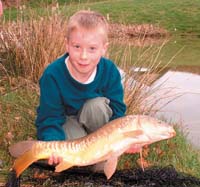
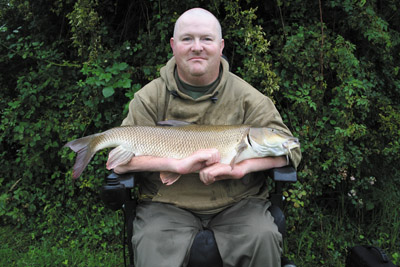
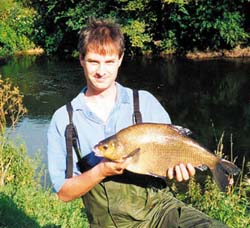
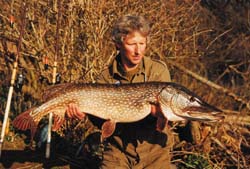
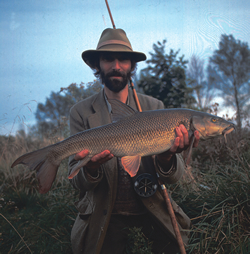 I was chub fishing the other day, sharing the river with a friend as we went from swim to swim, leapfrogging each other in our search for the fish. With stops for lunch and of course the obligatory photographing of the best looking specimen, we must have taken five hours to fish two miles of river.
I was chub fishing the other day, sharing the river with a friend as we went from swim to swim, leapfrogging each other in our search for the fish. With stops for lunch and of course the obligatory photographing of the best looking specimen, we must have taken five hours to fish two miles of river.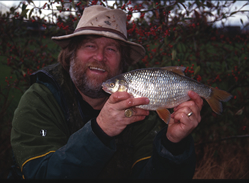 I have been catching fish around the country now for over 30 years so hopefully I've picked up a few useful tips along the way! So what I propose today is to give you my top 5 bait tips to catch more and bigger fish.
I have been catching fish around the country now for over 30 years so hopefully I've picked up a few useful tips along the way! So what I propose today is to give you my top 5 bait tips to catch more and bigger fish.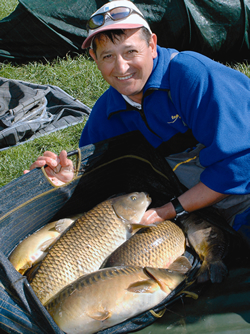 It seems hard to believe that it is only three years ago that the Angling Foundation launched its Nets Accreditation Scheme for keepnets, landing nets and allied equipment. The scheme was formulated because of increasing concern by observant fishery owners over the abrasiveness of certain types of nets and the effect this could be having on their fish.
It seems hard to believe that it is only three years ago that the Angling Foundation launched its Nets Accreditation Scheme for keepnets, landing nets and allied equipment. The scheme was formulated because of increasing concern by observant fishery owners over the abrasiveness of certain types of nets and the effect this could be having on their fish.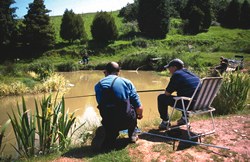 I have to say at the outset, that I was amazed by the amount of interest. Even given some small degree of apathy amongst the other teaching staff, that resulted in four forms not finding out about this new opportunity, 32 pupils signing up for my fishing tutorials was beyond my expectations.
I have to say at the outset, that I was amazed by the amount of interest. Even given some small degree of apathy amongst the other teaching staff, that resulted in four forms not finding out about this new opportunity, 32 pupils signing up for my fishing tutorials was beyond my expectations. It is fair to say that over the years Angling and Conservation organisations have not always seen 'eye to eye' or been the best of 'bed-fellows'. Fortunately, things have been changing in recent years and the word 'conflict' is seldom heard echoing up the Avon valley. Both Conservation and Angling interest groups are working extremely hard in the South Wessex Area with a number of exciting initiatives underway and success stories reported.
It is fair to say that over the years Angling and Conservation organisations have not always seen 'eye to eye' or been the best of 'bed-fellows'. Fortunately, things have been changing in recent years and the word 'conflict' is seldom heard echoing up the Avon valley. Both Conservation and Angling interest groups are working extremely hard in the South Wessex Area with a number of exciting initiatives underway and success stories reported.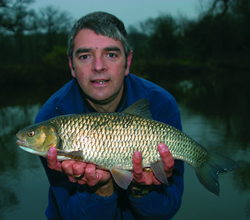 The South Wessex area is famous for it's big fish waters be it the chalk stream waters of the Hampshire Avon and Dorset Frome or the clay filtered Dorset Stour and its tributaries. Much of the fishing on these waters are controlled by angling clubs and syndicates, but there are some stretches that are open as day ticket waters or free stretches and these can give anyone a chance to capture that fish of a lifetime.Tickets and more information on all the waters can be obtained from this guide or local tackle shops in the relevant areas.
The South Wessex area is famous for it's big fish waters be it the chalk stream waters of the Hampshire Avon and Dorset Frome or the clay filtered Dorset Stour and its tributaries. Much of the fishing on these waters are controlled by angling clubs and syndicates, but there are some stretches that are open as day ticket waters or free stretches and these can give anyone a chance to capture that fish of a lifetime.Tickets and more information on all the waters can be obtained from this guide or local tackle shops in the relevant areas.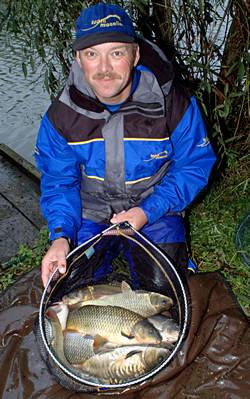 As a match angler of nearly 30 years I have seen changes to the sport I could never have envisaged when I started. From catching Roach, Bream and Chub from a sluggish Bristol Avon to the sometimes frantic sport encountered on the modern-day commercial waters.
As a match angler of nearly 30 years I have seen changes to the sport I could never have envisaged when I started. From catching Roach, Bream and Chub from a sluggish Bristol Avon to the sometimes frantic sport encountered on the modern-day commercial waters.